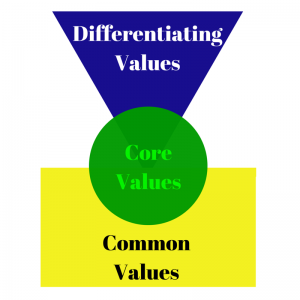The Value of B2C Branding in a B2B Environment
HP has decided to retain its PC division. After much political upheaval and internal debate – publicly monitored and reported for all the juicy gossip – the brand new CEO of HP – Meg Whitman – announced the decision to keep the Personal Systems Group. As reported in Computer Reseller News, Whitman indicated this decision was actually easy for her to make, but it came after exhaustive analysis of its importance to HP’s broader business.
For me personally, this decision is déjà vu.
In the mid-1990s I was part of a group of consultants working with the Canadian division of Compaq Computer Corporation – which later merged with HP. Our mission was to help them develop a database-marketing strategy and plan.
In a planning session with senior Compaq executives, it became clear that one of the directors was being treated as an outcast. He was responsible for the consumer division, which consistently was unprofitable. It angered the other executives why they had to continually support this money-losing division.
At the time, Compaq was like other technology-based companies where the majority of revenues and profits came from selling products and services to other businesses. They had a very successful business-to-business (B2B) model. On the other hand, their business-to-consumer (B2C) model was not profitable.
So why maintain a B2C business if it looses money every day?
B2B marketers should never underestimate the power of consumer branding and its impact on building a successful B2B brand. Businesses are made up of people who make personal choices every day as consumers. If employees are buying a trusted consumer brand for their home, they are much more likely to trust this same brand at work, if a suitable B2B solution is offered.
Trust transcends all human decisions across every environment.
In a B2B environment, buying decisions are often influenced by the potential impact on the decision-maker(s). When spending millions of dollars, the wrong decision might cost you your job. So for the one responsible to recommend and buy for a business, this aspect of branding – proven trust – is a much easy decision to make versus buying something that will be ‘new’ to everyone.
One of the conclusions of the Compaq Canada planning session was an agreement that their consumer branding efforts were integral to maintaining a successful B2B business. All of the other divisions of the business needed to provide support to the consumer division, that was actually leading the overall branding efforts. In essence, the consumer division could charge a ‘branding fee’ to the other divisions for the overall value it was providing to the business.
So its not surprising to see this same issue arise again at HP, who strangely now owns what was once Compaq. Their focus clearly remains divided between B2B and B2C, and the overall value provided by the B2C division is still not fully appreciated by the rest of the business. But after their most recent ‘exhaustive analysis’ hopefully it’s understood a little more. At least for now.







